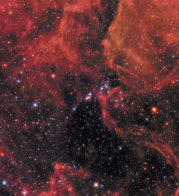The US Department of Energy’s Thomas Jefferson National Accelerator Facility (JLab) is well known for its Continuous Electron Beam Accelerator Facility (CEBAF), where experiments with a 6 GeV electron beam probe nuclear structure. Now it turns out the same beam may also be helpful for neutrino research. Physicists from several neutrino projects around the world recently visited JLab to take electron-scattering data on carbon, hydrogen, deuterium and iron targets.
Precise knowledge of neutrino beams and neutrino interactions with atomic nuclei helps neutrino researchers analyse the results of their experiments. They gather this by participating in nuclear and high-energy physics experiments, a practice known as “neutrino engineering”. Examples are the HARP experiment at CERN, which measures pion-production cross-sections of protons on nuclear targets, and experiment E04-001 at JLab, which measures electron-nucleus cross-sections.
Electrons at CEBAF energies interact with nuclei predominantly via the electromagnetic force, while neutrinos interact via the weak force. However, precise information about the electron interaction provides information about the neutrino interaction, since the two forces are actually different aspects of the electroweak force. Electrons probe the vector structure of the nucleon, whereas neutrinos probe both the vector and axial-vector structure. So both probes are needed to understand the full electroweak structure of the nucleon and the nucleus.
The nuclear targets studied in the JLab experiment are the same as, or closely resemble, the production targets and detectors commonly used in neutrino experiments. Thus electron-scattering studies with nucleons and nuclei at low momentum-transfer-squared Q2, such as the data taken at JLab in the Q2 range of 0.01-2 (GeV/c)2, can provide information about how neutrinos interact in neutrino experiments. For example, since experiments such as K2K (KEK to Kamioka) in Japan and MiniBooNE at Fermilab use 1 GeV neutrino beams to study neutrino oscillations, electroweak analysis of 1 GeV electron-scattering data from E04-001 can be used as a first step to provide constraints on neutrino cross-sections needed in the study of neutrino oscillations.
In the long term, JLab and JLab’s own researchers are collaborating in a future experiment, MINERvA (Main Injector Experiment v-A), which is dedicated to measuring neutrino cross-sections in Fermilab’s NuMI (Neutrinos at the Main Injector) beam line. Combining the high-precision electron cross-section data from E04-001 with precise data on neutrino cross-sections from MINERvA should allow the axial structure of the nucleon to be extracted.





